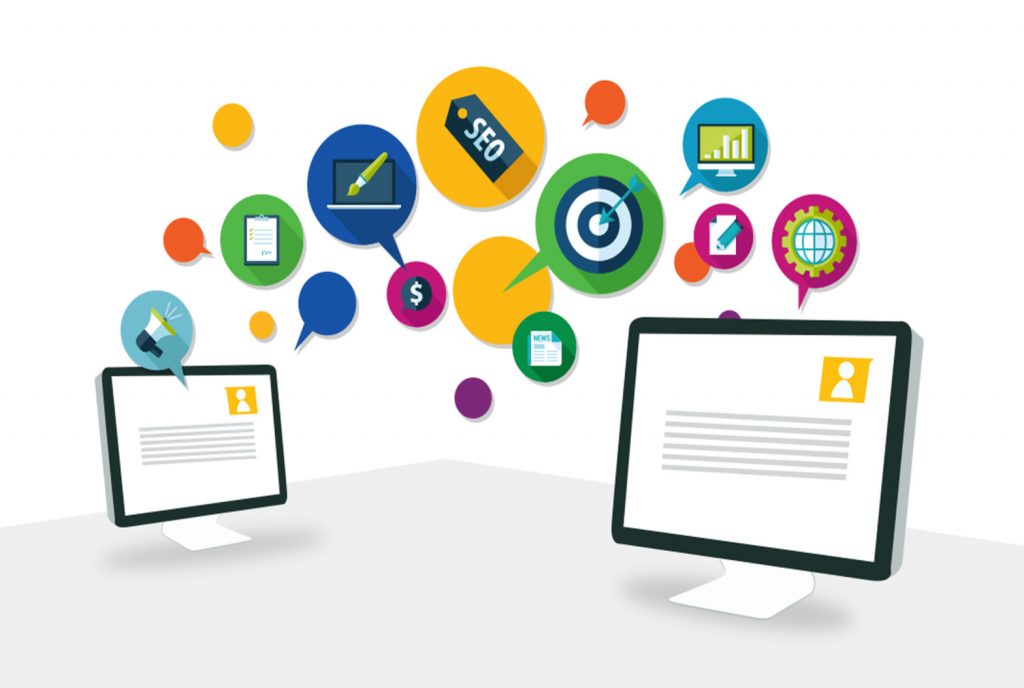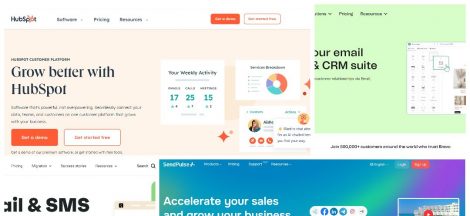Any person who has been keeping up with what is happening in the marketing world should at some point have heard someone mention the term omnichannel marketing.
When you first come across the term, it’s bound to feel a little bit loaded. Questions such as:
• What does this term mean?
• How will it benefit my brand?
• Should my business even apply it?
• If so, how do I go about it?
All are likely to pop into your mind. But regardless of whether you’re operating a small or medium-sized business, you will have realized by now that it has become essential to incorporate personalized strategic marketing programs in everything you do.
Today’s consumers have access to a broad range of devices, which means that your business has to provide them with multiple touchpoints before they can make a decision on whether to shop at your store or not.
This fundamental marketing challenge posed by the modern consumer is what necessitates the need for you to develop an omnichannel marketing strategy. These marketing efforts would also need good tracking and reporting in order to make the best results. You can use tools like Supermetrics alternative to building customizable visual reports. When starting out, you will need to take the following into account:
1. Start by Establishing Your Goals
You have to determine what your primary business goal is. Do you want to focus on acquiring new customers? Are you more interested in maximizing returns on the investments already made? Whatever goals you settle on, will play an essential role in helping drive your marketing strategy.
They are the ones that will influence your marketing combination. Therefore,
• Ensure that you utilize the business goals to drive your marketing strategy, in the same manner, you use email subject lines to drive your email promo messages.
• Take time to match the goals you have identified with channels that can guarantee better results.
2. Put Personas at the Center
What is your target group? Are you more interested in people between the ages of 20 and 40? Mostly male or female? Working professionals? Is the person you have identified as your ideal customer interested in certain activities? These are questions that you will need to answer when developing the persona.
The same questions will also come into play when dealing with your newsletter design. They assist you to identify the right campaigns, the right messages, and the right look that can assist you in growing your company. Consider:
• Creating the ideal personas of the clients you would like to acquire.
• The building or utilizing targeted buyer demographics.
3. Your Business Website Is the Starting Point of the Omnichannel Marketing Campaign
While the website will generally appear as an odd starting point for this type of campaign, you should note that it’s quite critical. In the end, all the marketing efforts you have applied will lead back to it. This calls for you to design the site with a customized user experience. Where email subscriptions are included, ensure that clients get to receive a confirmation email.
There’s a need to ensure that the site includes all the innovation and tech advancements that are needed to help you focus on conversions. This includes making sure that it has a mobile-app-like experience that will smoothen navigation and ease of use. For your website, you will need to:
• Ensure that it is up to date, technologically wise.
• Provide a mobile-first experience. Ensuring that the design is responsive is no longer enough.
• Include conversion-centric features, e.g., sending out a confirmation email after a client has made a purchase or subscribed to newsletters.
4. Get Local and Organic
Your SEO strategy and local search presence are important aspects of the omnichannel advertising strategy. The best way to establish whether the business is listed correctly and in many places is by running a presence scan. Consumers use apps like Yelp and Apple Maps to look up information related to their business.
Running this scan will ensure that the business is being found. This will include ensuring that you’re ranking well for non-branded and branded keywords to keep the company at the top of search engine results. Additionally, make sure that you also spend some time refining your voice search.
It’s expected that voice search will take up fifty percent of all web-based searches in the next year or so. For this particular category, you need to:
• Craft an organic search strategy that is also voice-ready.
• Come up with a sound keyword strategy for use in both non-branded and branded keywords. This should also be reflected in your newsletter design.
• Confirm that your localized search presence is above board for all search-based applications.
5. Be Social
Your marketing mix should also take into account your social media advertising activities. Any social campaign being run by your business should focus on events that are close to your location. The same should also be reflected in your email subject lines. Doing so will assist in driving home your business’ unique selling points.
It’s the easiest way to highlight the unique points that your target consumers value the most.
6. PPC
Whether it’s Yahoo, Bing, Google, or all three search engines, you must ensure that you have a well-thought-out paid campaign as part of your marketing strategy. From driving offer-specific traffic to protecting brand equity, you cannot execute any successful marketing strategy, without factoring in paid advertising campaigns.
Simply put, PPC is,
• The ideal vehicle that you need to continue protecting your brand.
• It is there to help you drive offer-specific traffic to various landing pages on your website.
7. Programmatic Display Advertising
Programmatic display advertising is in this case very similar to PPC. A great way to engage customers would be to combine audience segmentation and personalization. Using in-house data in this manner will go a long way toward convincing clients who may be unsure of whether to work with your business or not.
• Try to place your focus on segmentation and personalization to help enhance performance.
• Segmentation and personalization are tasks that you can do at almost all budget levels.
8. Meta-search Advertising
Metasearch-based engines are increasingly becoming ideal avenues for building interest and driving awareness for your business. They come in handy when customers are still trying to make a decision on who to trust with their hard-earned money.
You will need to have an efficient metasearch element in your omnichannel marketing strategy regardless of how long you intend to continue running the campaign. You have to remember that creating awareness and consideration are essential aspects of creating the business demand tunnel.
• It’s always important to try and fill the top of the funnel.
• Try to leverage the metasearch to help you build your brand and drive awareness.
9. Personalized Email Marketing
You can design your email marketing campaigns to take up new roles as part of your omnichannel program. Email marketing has for long been viewed as an ideal means of assisting to drive post-conversion revenue such as the adoption of ancillary products, and upgrades, as well as in fostering repeat business from your clients.
• You can use email marketing strategies to help you enhance upsells and post-conversion upgrades.
• Foster loyalty programs and encourage repeat business.
10. Make Sure to Participate in All Special Events
Many business owners tend to think of omnichannel advertising as more of a strategic initiative, or rather a strategy that encompasses all your advertising efforts in the course of a single year. And while this may be true, you also have to realize that there are very many opportunities in a year where you can choose to leverage omnichannel techniques.
You can do this in a manner that is more segmented, albeit a bit limited. This may include running campaigns on special days such as Easter weekend, Memorial Day, Black Friday, etc. trying and taking part in as many campaigns as possible, including those taking place at your local fair. Remember, each special event in 2020 is an opportunity for you to market your business using an omnichannel approach.
Suggested:
How Do You Choose an Automation Tool that Supports It?





 Newor Media Review 2024 – a Popular AdSense Alternative
Newor Media Review 2024 – a Popular AdSense Alternative
Hello Robin, I always follow your posts. Here is the key to the success of automation marketing. That I’ve been looking for for a long time. I am so glad to read this article.
Hey Robin,
Omnichannel marketing has obtained buzzword status in the marketing world these days.
In my opinion – It’s important to gain an insightful view of the customer to get a complete picture of what they like and don’t like, as well as their buying habits, preferences and how they behave across all channels.
A sure shot omnichannel marketing strategy requires more than simply grafting social media and mobile elements onto a pre existing marketing campaign.
Eventually, thanks for revealing a light on trendy headline.
With best wishes,
Amar Kumar